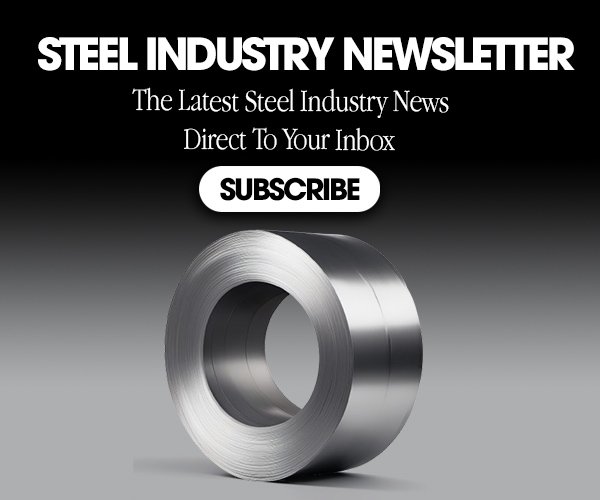President-elect Donald Trump’s proposed tariffs on imports from China, Canada, and Mexico may have far-reaching effects on the U.S. steel industry, trucking sector, and manufacturing landscape. This article examines the potential consequences and benefits of these tariffs and their implications for various sectors of the American economy. Steel Industry Impact Trump’s tariff proposals could affect the U.S. steel industry, which has already experienced volatility in recent years. The impact is likely to be multifaceted, with both potential benefits and challenges for domestic steelmakers.
Potential benefits for domestic steelmakers include:
- Price Increases: A 25% tariff on goods from Canada and Mexico could drive up steel prices by $100 to $150 per short ton.
- Increased Margins: Even under challenging demand conditions, steel industry margins have been higher since 2018, suggesting that further protective measures would be welcomed by domestic steelmakers.
- Production Boost: According to the U.S. International Trade Commission (USITC), steel production increased by 1.9% due to previous tariffs, amounting to $1.5 billion annually on average.
However, the industry also faces several challenges and concerns:
- Limited Impact on Chinese Imports: Trump’s proposed 60% tariff on Chinese steel may have limited effect due to China’s already small share in U.S. steel imports.
- Potential for Overcapacity: Despite previous tariffs, domestic steel production is not significantly higher than before the Section 232 steel tariff implementation.
- Market Distortions: The 2021-2022 steel price spike led to record profits for major steel producers, but these were often used for stock buybacks rather than significant capacity expansion.
- Employment Stagnation: Nationwide employment at steel and iron mills stood at 80,600 in 2017 and registered the exact same number of workers in 2023, indicating that tariffs did not cause a sustained increase in employment for the steel industry.
Trucking Industry Effects
The trucking sector, a key economic indicator, faces potential challenges from the proposed tariffs. The industry is currently experiencing its longest and deepest down cycle since the global financial crisis, which could be exacerbated by new tariffs. Negative impacts on the trucking industry include reduced demand due to higher prices and potential supply chain disruptions. However, there could be potential shifts that benefit the sector, such as a boost in domestic manufacturing leading to increased long-haul trucking demand.
Manufacturing Sector Implications
The manufacturing sector, particularly industries reliant on steel inputs, faces a complex set of potential challenges and opportunities due to the proposed tariffs. Increased input costs could damage manufacturer profitability and global competitiveness, while inflationary pressures may lead to higher interest rates and weaken domestic manufacturing. The Peterson Institute for International Economics estimated that increased costs of inputs due to the Section 232 tariffs on steel and aluminum likely resulted in 75,000 fewer manufacturing jobs in firms where steel or aluminum are an input into production.
However, there are potential opportunities for the manufacturing sector:
- Reshoring Incentives: If tariffs reduce the cost differential between domestic and foreign production, it could encourage some manufacturers to return operations to the U.S.
- Protection for Derivative Products: The Trump administration has announced plans to expand tariffs to cover certain derivative products that use steel and aluminum, such as nails, tacks, wire, and cables, to protect them against competition from foreign suppliers who do not pay tariffs on steel.
Economic Impact of Section 232 Tariffs The Section 232 tariffs on steel and aluminum have had significant effects on the U.S. economy, as evidenced by various studies and reports. The USITC provided detailed estimates of the tariffs’ economic effects:
Metric | Steel | Aluminum |
|---|---|---|
| Change in Imports | -24% | -31.1% |
| Change in Production | +1.9% | +3.6% |
| Change in Imported Price | +22.7% | +8.0% |
| Change in Average Price | +2.4% | +1.6% |
| Change in Domestic Price | +0.7% | +0.9% |
Impact on Downstream Industries and Job Creation
The USITC report found that “downstream” industries experienced an annual $3.4 billion decrease in production from 2018 to 2021 due to the price increases, a 0.6 percent reduction per year on average. The construction and automotive industries were the most impacted by the steel tariffs, accounting for 47 percent and 25 percent of all steel consumption, respectively. The Peterson Institute for International Economics concluded that the tariffs would only create about 8,700 jobs in the steel industry, but at a high cost. The Section 232 tariffs would raise aggregate income in the steel industry by about $2.4 billion in 2018 but raise costs for steel consumers by about $5.6 billion. This implies a cost of nearly $650,000 for every job created.
Alternative Approaches and Global Trade Implications
Some experts suggest alternatives to tariffs for supporting the steel industry, such as implementing a price support system similar to that used in agriculture or developing targeted policies that address specific industry needs without broadly disrupting trade. Trump’s proposed tariffs could have significant implications for global trade relations, including potential retaliatory measures from U.S. trade partners, disruption of integrated supply chains, and shifts in global trade patterns.
Consumer Impact and Long-Term Economic Consequences
The proposed tariffs may have a significant impact on U.S. consumers through price increases and reduced purchasing power. Long-term economic consequences could include:
- GDP Impact: According to Tax Foundation estimates, repealing the Section 232 tariffs and quotas would increase long-run GDP by 0.02 percent ($3.5 billion) and create more than 4,000 jobs.
- Industry Restructuring: Prolonged tariffs could lead to significant restructuring in various industries as companies adapt to the new trade environment.
- Innovation and Competitiveness: Higher input costs could potentially hamper innovation and reduce the global competitiveness of U.S. manufacturers.
While Trump’s proposed tariffs aim to protect and boost domestic industries, particularly steel, they present a complex set of challenges and potential unintended consequences for the steel industry, trucking sector, and manufacturing landscape. The ultimate impact will depend on the specific implementation of these policies and the response of global trade partners. Policymakers should carefully weigh the potential benefits against the broader economic impacts, including effects on employment across all sectors, consumer welfare, and long-term economic growth.
If you enjoyed this article about U.S. Steel and Nippon Steel check out some of our other articles on the subject:
Trump’s Re-election and Potential Impact on the U.S. Steel Industry
U.S. Steel-Nippon Steel Merger: Arbitration Looms as Global Hurdles have Cleared
U.S. Steel “Corrects the Record” on Transaction with Nippon Steel
EU Approves Nippon Steel – U.S. Steel Acquisition, US DOJ Review Ongoing
Nippon Steel U.S. Steel Acquisition Update
Automakers Challenge Potential Cleveland-Cliffs-U.S. Steel Merger
Nippon Steel Determined to Acquire U.S. Steel Despite Scrutiny
Biden and Trump Oppose Nippon Steel’s U.S. Steel Acquisition
U.S. Steel Acquisition: Nippon Embraces USW Challenge
Be sure to subscribe to the Steel Industry Newsletter below for the latest steel related news direct to your inbox!










